19 Bridget Riley Follow Orange Paired signed and dated 'Riley 13' on the turnover edge; further signed, titled and dated 'Riley "Orange Paired" 2013' on the overlap and 'Riley "Orange Paired" 2013' on the stretcher oil on canvas 178 x 305.4 cm (70 1/8 x 120 1/4 in.) Painted in 2013, this work will be included in the forthcoming complete catalogue of paintings which is being prepared by the Bridget Riley Archive.
Provenance Galerie Max Hetzler, Berlin Acquired from the above by the present owner Catalogue Essay The present work, Orange Paired , is exemplary of Bridget Riley’s iconic use of parallel lines on a vast scale, liberating Riley’s subtle undulations of pulsating colour in chromatic repetition. Moving along the expanse of canvas, the viewer is immediately struck by the rhythmic quality of the reoccurring bands of carefully selected tonal variation. The vitality and dynamism coursing through the canvas is reinvigorating, setting Riley apart as a master of colour selection. On exhibiting her first three pure colour paintings at the British Pavilion in Venice, 1968, Riley found huge critical acclaim and her pure colour canvasses were celebrated internationally. This exhibition, which included Late Morning (Tate, London), directly contributed to Riley receiving the prestigious accolade of the International Painting prize, becoming the first woman and British painter ever to do so. Orange Paired relates both to Riley’s integral preliminary milestone with pure colour at the Biennale, as well as her decision in 1967 to elongate the size of her canvasses to promote a larger viewing perspective. Bridget Riley’s continued exploration of optics and colour have afforded her the reputation as one of the most internationally recognisable abstract artists. Finding notoriety in the 1960’s, her prestige and influence on contemporary art remains resolutely steadfast, while her extensive body of work continues to garner discussion in a contemporary context. Citing Georges-Pierre Seurat as an early point of reference, Riley’s premier works played with Pointillism and Impressionism to examine the interaction of colour and form to create light and depth. Cultivating her technique to explore total abstraction, Riley honed her optical style, creating dizzying and disorientating canvasses where depth and visual stimuli emanated from the delicate positioning of lines. Initially working with a largely monochrome palette, Riley’s first solo exhibition at Gallery One in 1962 soon led to a string of international shows, including her Museum of Modern Art, New York, solo exhibition in 1966, and prizes such as the AICA Critics Prize and John Moores' Liverpool Open Section, in 1963. Riley’s unremitting analysis of form and its negative space provided a perfect spring board for colour application as she eradicated black and introduced tonal bands into her abstractions in 1967. As Riley stated ‘I wanted to bring about some fresh way of seeing again what had almost certainly been experienced, but which had been either dismissed or buried by the passage of time’, (Bridget Riley 'The Pleasures of Sight', (1984), in Robert Kudielka, Bridget Riley The Eye's Mind, London, 1999, p. 33). Alternating lines of colour with white in her recurring patterns promoted interplay between the shades, which varied depending on position and perspective. Immediately recognisable through Riley’s razor-sharp geometric line, her large scale canvasses dazzle the viewer with their precise and uplifting palettes. Executed in 2013, the present work belongs to the artist’s contemporary experimentations with form and colour, continuing the dialogue ignited by Riley and her Op Art contemporaries in the sixties. Using colour as a form in its own right, Riley draws upon her mastery of tone to encourage natural phenomena. In Orange Paired Riley explores how visual sensation can fluctuate through subtle changes in chromaticity. Using a mouth-watering palette of pink, green, blue, yellow and orange, Riley’s colours bind to produce a sublime microcosm between the viewer and picture plane. The rhythmic staccato of horizontal lines creates visual cadence which seemingly breaks and blends on the slightest shift of perspective. Enveloping the viewer, the uninterrupted lines stretch from end to end of the canvas, elongating the horizon; the viewer is encouraged to lose themselves in the luminosity radi
19 Bridget Riley Follow Orange Paired signed and dated 'Riley 13' on the turnover edge; further signed, titled and dated 'Riley "Orange Paired" 2013' on the overlap and 'Riley "Orange Paired" 2013' on the stretcher oil on canvas 178 x 305.4 cm (70 1/8 x 120 1/4 in.) Painted in 2013, this work will be included in the forthcoming complete catalogue of paintings which is being prepared by the Bridget Riley Archive.
Provenance Galerie Max Hetzler, Berlin Acquired from the above by the present owner Catalogue Essay The present work, Orange Paired , is exemplary of Bridget Riley’s iconic use of parallel lines on a vast scale, liberating Riley’s subtle undulations of pulsating colour in chromatic repetition. Moving along the expanse of canvas, the viewer is immediately struck by the rhythmic quality of the reoccurring bands of carefully selected tonal variation. The vitality and dynamism coursing through the canvas is reinvigorating, setting Riley apart as a master of colour selection. On exhibiting her first three pure colour paintings at the British Pavilion in Venice, 1968, Riley found huge critical acclaim and her pure colour canvasses were celebrated internationally. This exhibition, which included Late Morning (Tate, London), directly contributed to Riley receiving the prestigious accolade of the International Painting prize, becoming the first woman and British painter ever to do so. Orange Paired relates both to Riley’s integral preliminary milestone with pure colour at the Biennale, as well as her decision in 1967 to elongate the size of her canvasses to promote a larger viewing perspective. Bridget Riley’s continued exploration of optics and colour have afforded her the reputation as one of the most internationally recognisable abstract artists. Finding notoriety in the 1960’s, her prestige and influence on contemporary art remains resolutely steadfast, while her extensive body of work continues to garner discussion in a contemporary context. Citing Georges-Pierre Seurat as an early point of reference, Riley’s premier works played with Pointillism and Impressionism to examine the interaction of colour and form to create light and depth. Cultivating her technique to explore total abstraction, Riley honed her optical style, creating dizzying and disorientating canvasses where depth and visual stimuli emanated from the delicate positioning of lines. Initially working with a largely monochrome palette, Riley’s first solo exhibition at Gallery One in 1962 soon led to a string of international shows, including her Museum of Modern Art, New York, solo exhibition in 1966, and prizes such as the AICA Critics Prize and John Moores' Liverpool Open Section, in 1963. Riley’s unremitting analysis of form and its negative space provided a perfect spring board for colour application as she eradicated black and introduced tonal bands into her abstractions in 1967. As Riley stated ‘I wanted to bring about some fresh way of seeing again what had almost certainly been experienced, but which had been either dismissed or buried by the passage of time’, (Bridget Riley 'The Pleasures of Sight', (1984), in Robert Kudielka, Bridget Riley The Eye's Mind, London, 1999, p. 33). Alternating lines of colour with white in her recurring patterns promoted interplay between the shades, which varied depending on position and perspective. Immediately recognisable through Riley’s razor-sharp geometric line, her large scale canvasses dazzle the viewer with their precise and uplifting palettes. Executed in 2013, the present work belongs to the artist’s contemporary experimentations with form and colour, continuing the dialogue ignited by Riley and her Op Art contemporaries in the sixties. Using colour as a form in its own right, Riley draws upon her mastery of tone to encourage natural phenomena. In Orange Paired Riley explores how visual sensation can fluctuate through subtle changes in chromaticity. Using a mouth-watering palette of pink, green, blue, yellow and orange, Riley’s colours bind to produce a sublime microcosm between the viewer and picture plane. The rhythmic staccato of horizontal lines creates visual cadence which seemingly breaks and blends on the slightest shift of perspective. Enveloping the viewer, the uninterrupted lines stretch from end to end of the canvas, elongating the horizon; the viewer is encouraged to lose themselves in the luminosity radi
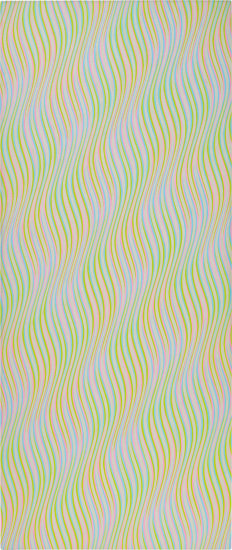
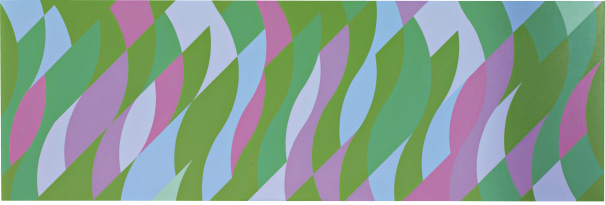
.jpg)
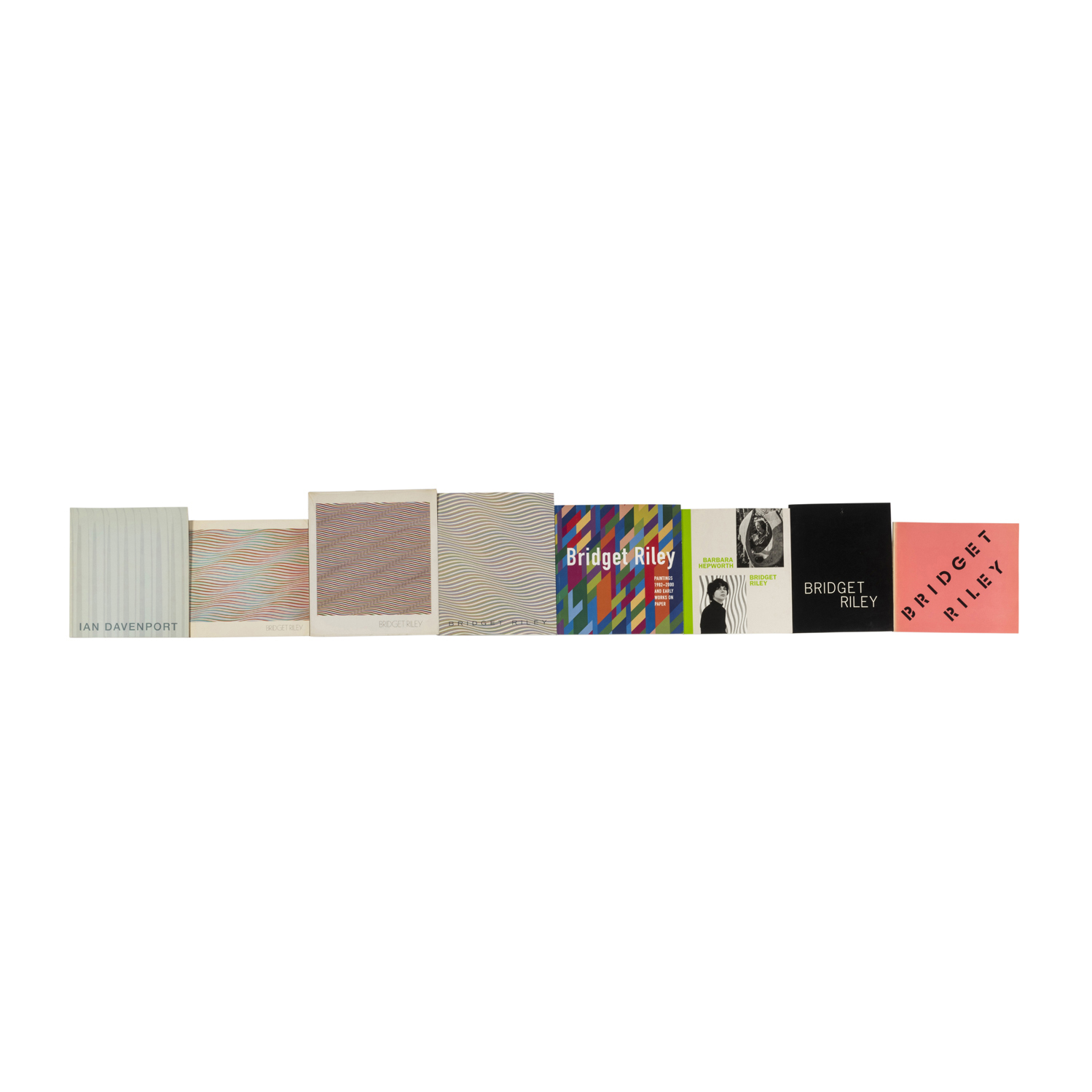
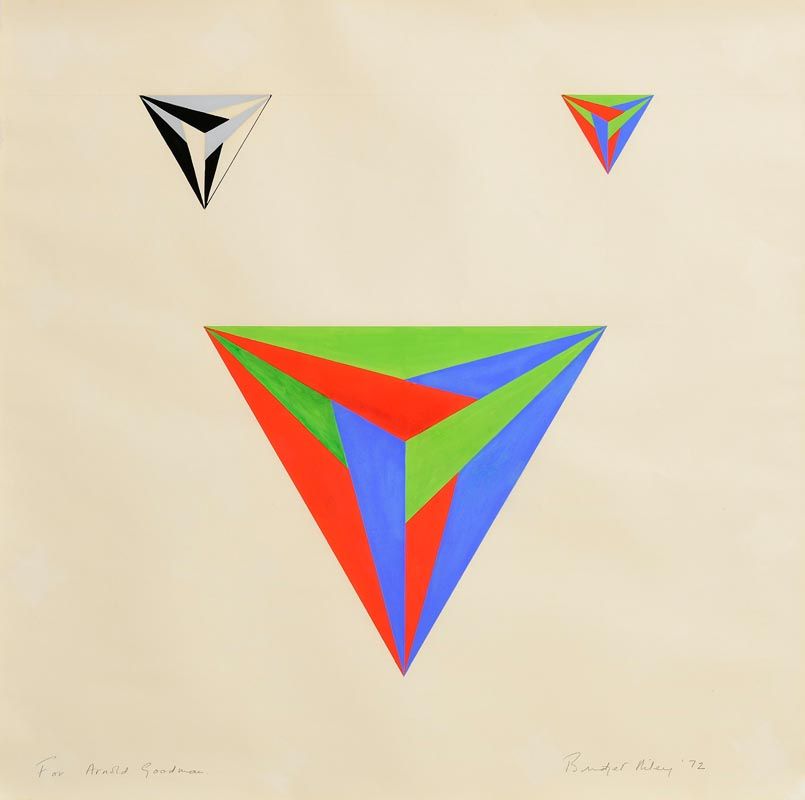
.jpg)
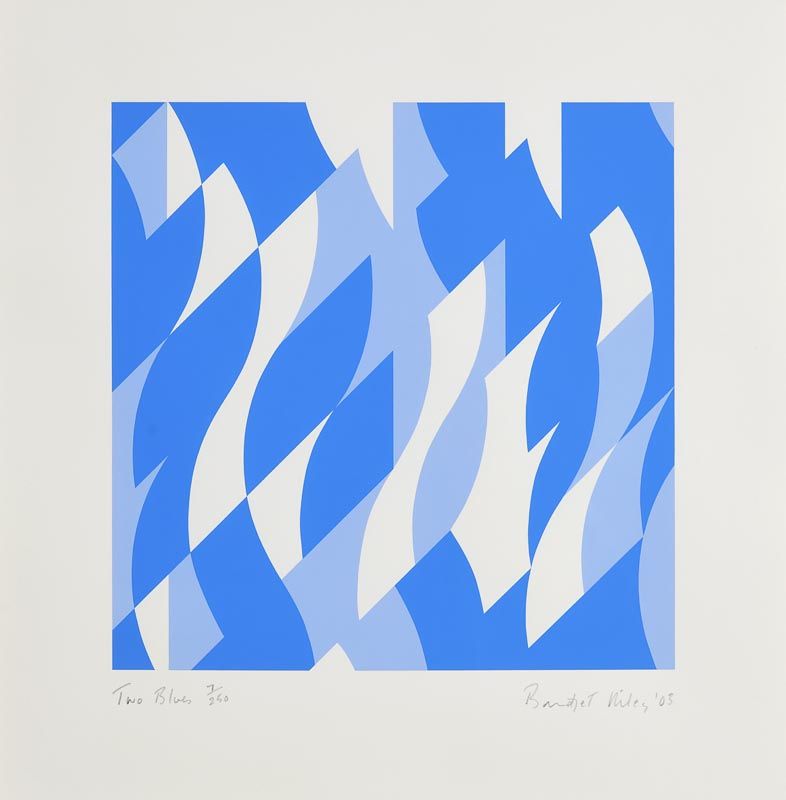
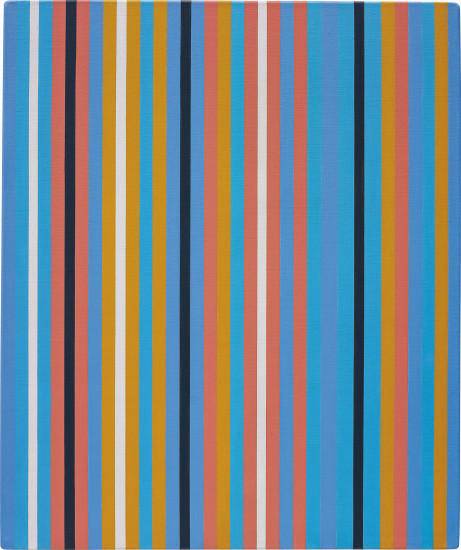
.jpg)
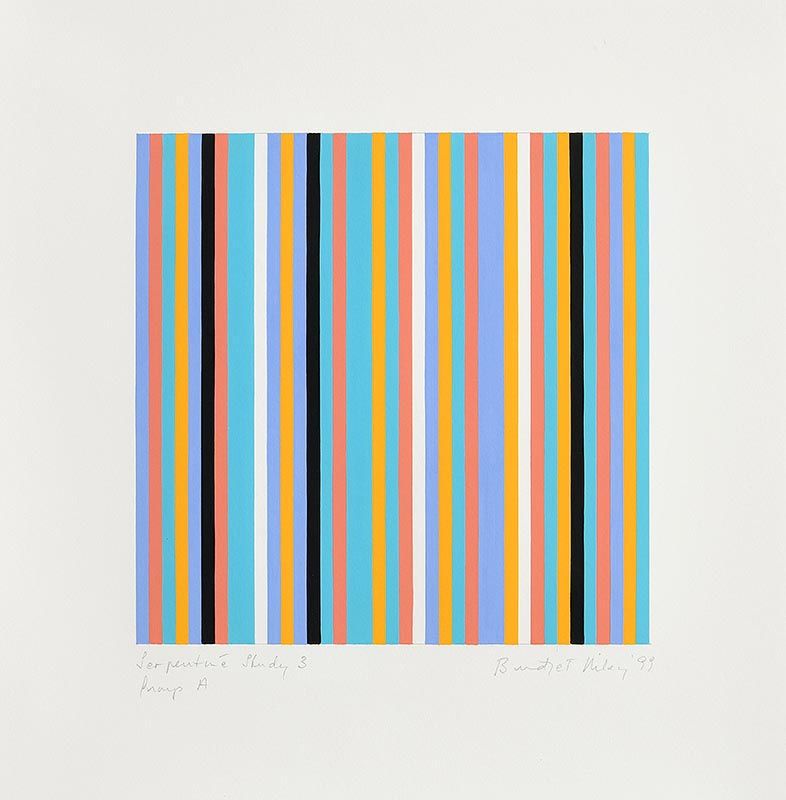
.jpg)
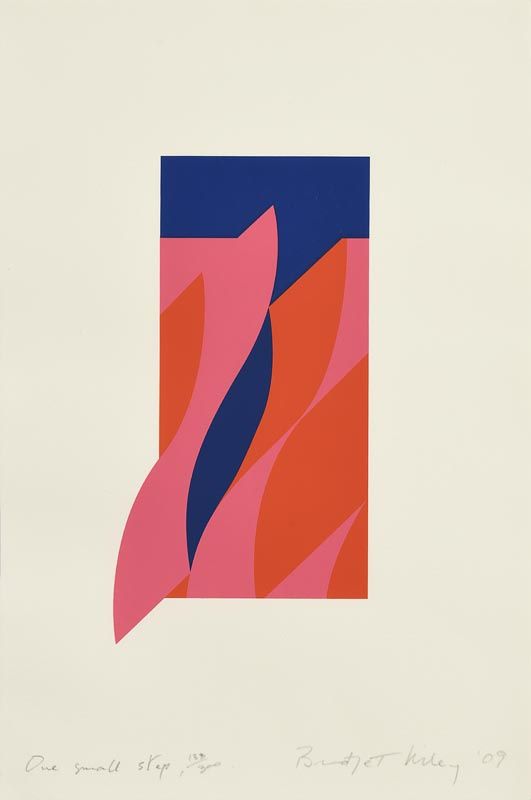

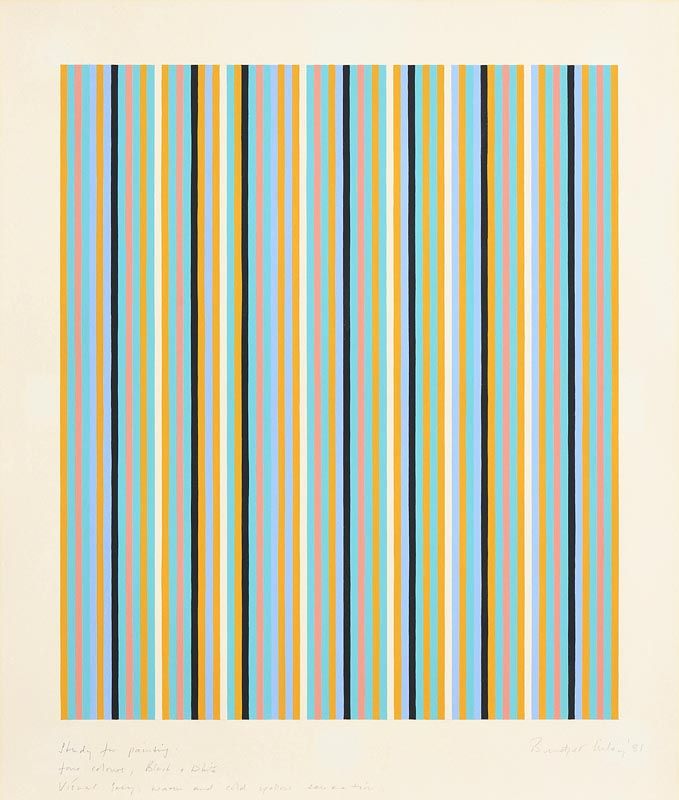
Testen Sie LotSearch und seine Premium-Features 7 Tage - ohne Kosten!
Lassen Sie sich automatisch über neue Objekte in kommenden Auktionen benachrichtigen.
Suchauftrag anlegen